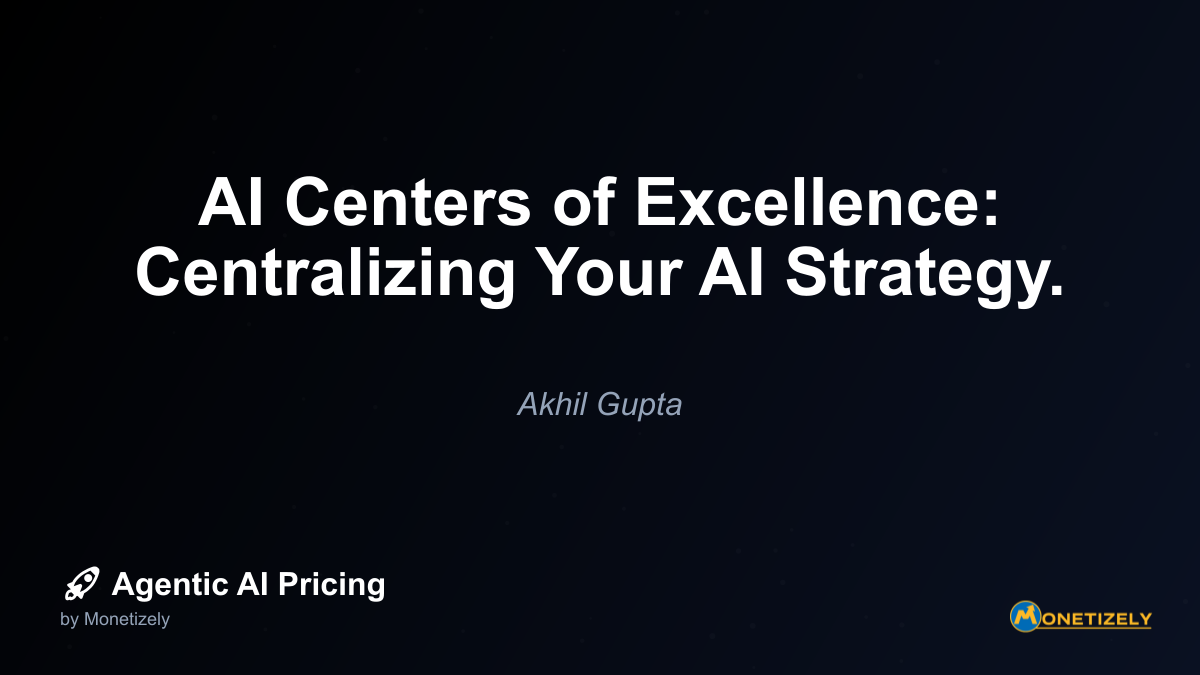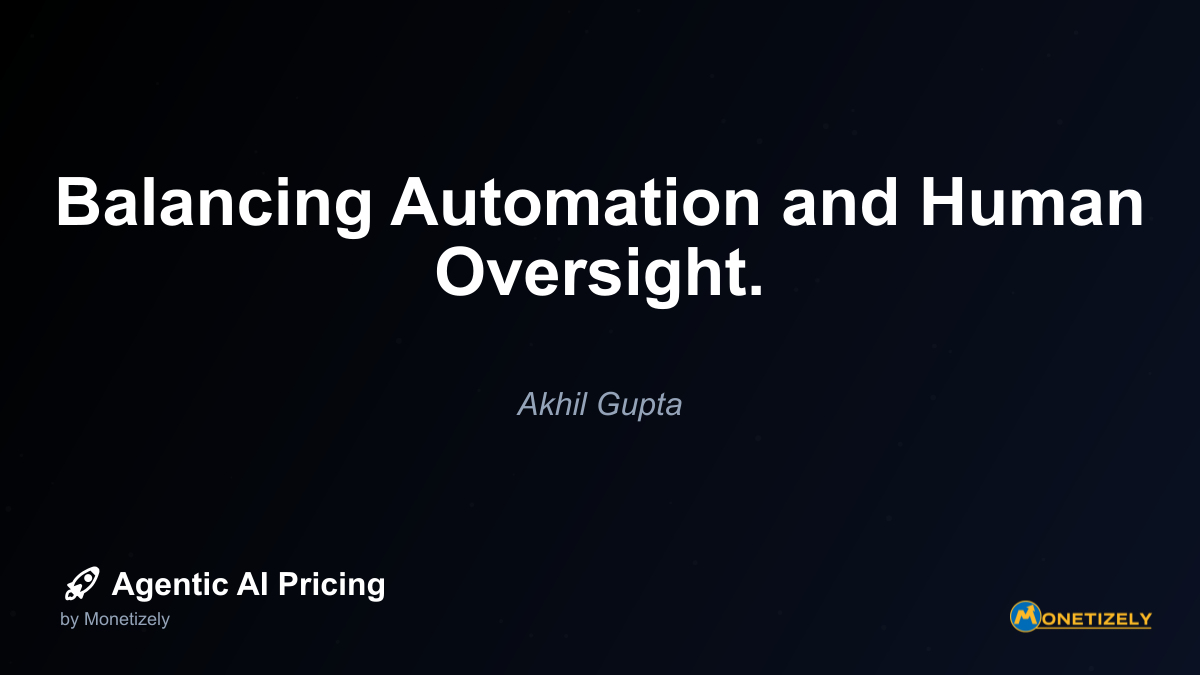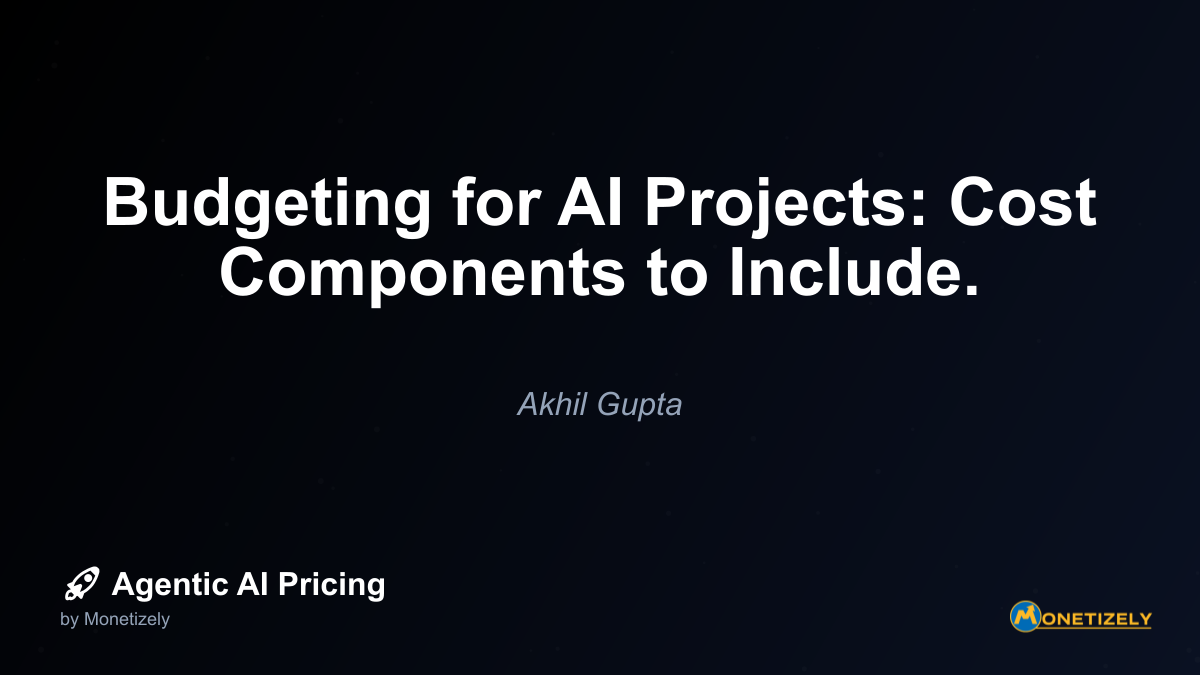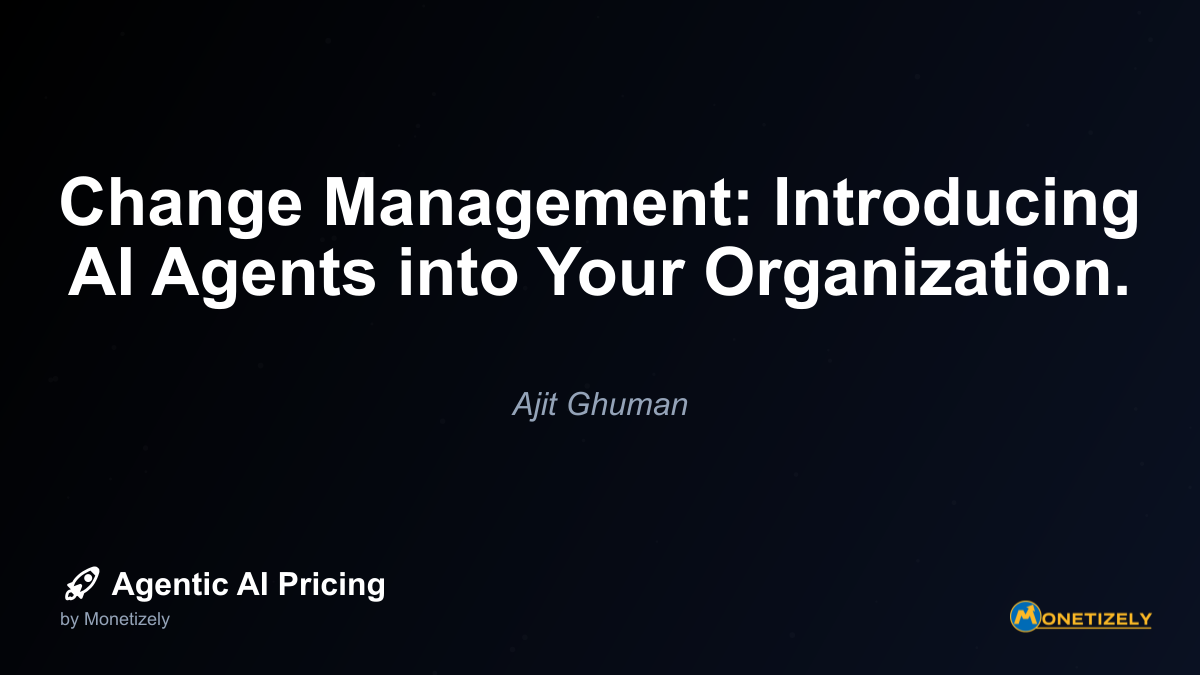· Akhil Gupta · Implementation Strategies · 6 min read
Building Your Own AI Agent vs. Buying from a Vendor.
AI and SaaS Pricing Masterclass
Learn the art of strategic pricing directly from industry experts. Our comprehensive course provides frameworks and methodologies for optimizing your pricing strategy in the evolving AI landscape. Earn a professional certification that can be imported directly to your LinkedIn profile.
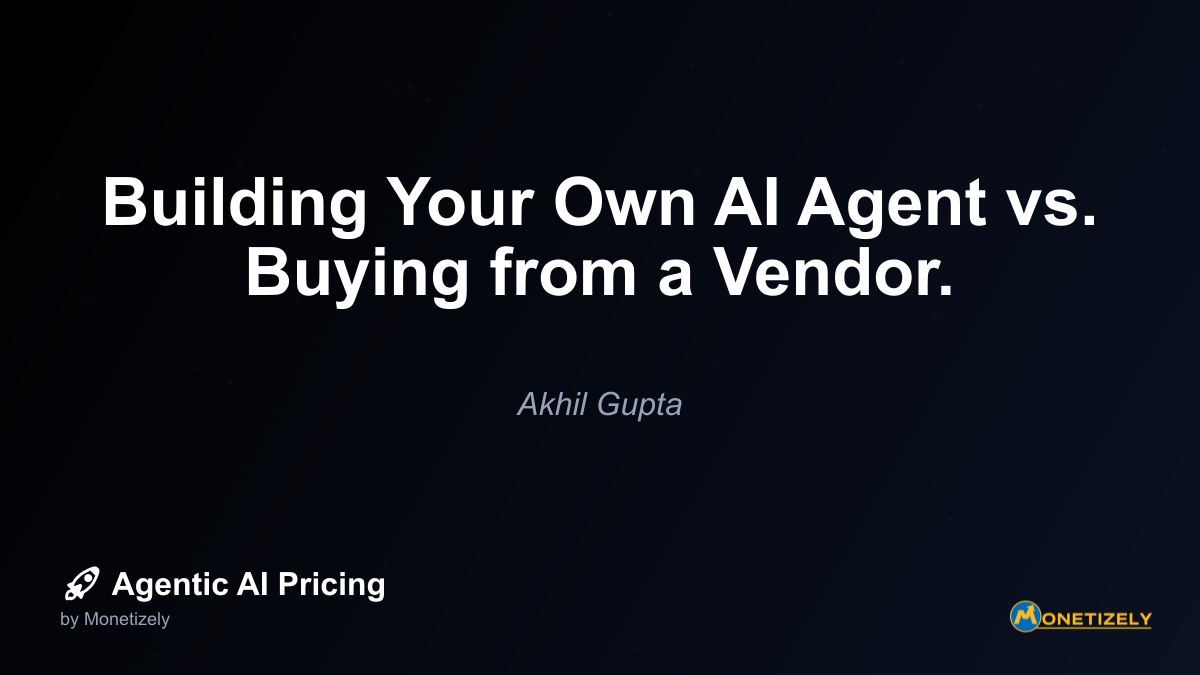
Making the Decision: A Framework for Evaluation
When evaluating whether to build or buy AI agent capabilities, organizations should consider the following structured approach:
1. Strategic Alignment Assessment
Begin by evaluating how AI agents align with core business strategy:
- Is AI a core differentiator for your products or services?
- Will custom AI development create sustainable competitive advantage?
- How central are AI capabilities to your long-term business model?
Organizations for whom AI represents a core strategic capability may lean toward custom development, while those seeking to enhance existing operations may benefit from vendor solutions.
2. Capability Gap Analysis
Honestly assess your organization’s current AI capabilities:
- Technical expertise in relevant AI domains
- Experience with similar development projects
- Data assets and management capabilities
- Integration expertise with existing systems
The larger the gap between current capabilities and those required for successful implementation, the stronger the case for vendor solutions—at least initially.
3. Total Cost of Ownership Calculation
Develop a comprehensive cost model comparing both approaches:
- Initial development or acquisition costs
- Ongoing maintenance and enhancement expenses
- Integration and customization requirements
- Training and change management considerations
- Expected useful life and depreciation schedules
This analysis should extend beyond the first year to capture the full lifecycle costs of both approaches.
4. Risk Assessment
Evaluate the risks associated with each approach:
- Development risks (technical challenges, timeline overruns)
- Vendor risks (dependency, pricing changes, discontinuation)
- Implementation risks (adoption, integration challenges)
- Compliance and security considerations
- Talent acquisition and retention risks
Organizations should develop mitigation strategies for the highest-priority risks associated with their chosen approach.
5. Timeline Requirements
Consider how implementation timelines align with business objectives:
- Competitive pressures and market dynamics
- Integration with other strategic initiatives
- Revenue or cost-saving expectations
- Customer or stakeholder commitments
Time-sensitive initiatives may favor vendor solutions, while longer-term strategic projects might benefit from custom development.
Industry-Specific Considerations
The build-versus-buy decision often varies significantly across industries, reflecting different regulatory environments, competitive dynamics, and AI maturity levels.
Financial Services
Financial institutions typically prioritize:
- Strict security and compliance requirements
- Proprietary risk models and algorithms
- Integration with legacy systems
- Regulatory transparency and explainability
These factors often lead to hybrid approaches where core models are purchased from vendors but integrated into custom frameworks with proprietary data and risk models.
Healthcare
Healthcare organizations must consider:
- Patient data privacy and HIPAA compliance
- Integration with clinical workflows and EHR systems
- Evidence-based validation requirements
- Specialized domain knowledge requirements
The highly regulated nature of healthcare often favors vendor solutions that have already navigated complex compliance requirements, with customization focused on workflow integration.
Retail and E-commerce
Retail organizations typically emphasize:
- Customer experience personalization
- Inventory and supply chain optimization
- Real-time recommendation capabilities
- Omnichannel integration
The competitive advantage of unique customer experiences often drives retailers toward custom development of customer-facing AI agents, while leveraging vendor solutions for operational applications.
Manufacturing
Manufacturing companies focus on:
- Integration with operational technology (OT) systems
- Predictive maintenance and quality control
- Supply chain optimization
- Process-specific knowledge requirements
The specialized nature of manufacturing processes often leads to hybrid approaches combining vendor platforms with custom models trained on organization-specific operational data.
Pricing Implications for AI Agent Implementation
The build-versus-buy decision carries significant implications for how organizations both incur costs and potentially monetize their AI investments.
Cost Structures for Custom Development
Organizations building custom AI agents typically face:
- Front-loaded investment requirements
- Capitalized development expenses
- Ongoing operational costs for maintenance and enhancement
- Infrastructure scaling costs as usage increases
These costs must be amortized over the expected useful life of the AI agent, with careful consideration of how quickly the technology may become obsolete.
Vendor Pricing Models
When purchasing AI agent capabilities from vendors, organizations encounter various pricing models:
- Subscription-based pricing: Fixed monthly or annual fees based on features and user counts
- Usage-based pricing: Charges based on API calls, processing time, or other consumption metrics
- Tiered pricing: Different service levels with corresponding feature sets and price points
- Outcome-based pricing: Fees tied to specific business outcomes or performance metrics
Each model carries different implications for cost predictability, alignment with value creation, and scalability as usage grows.
For a deeper exploration of API-based versus platform-based pricing models, see our detailed comparison of AI agent pricing approaches target=“_blank”.
Future-Proofing Your AI Agent Strategy
Regardless of whether organizations choose to build or buy, they must consider how their approach will adapt to the rapidly evolving AI landscape.
Technology Evolution Considerations
AI capabilities are advancing at an unprecedented pace, with significant implications for long-term strategy:
- How will emerging AI capabilities affect your competitive positioning?
- What technical debt might accumulate in custom solutions?
- How will vendor solutions incorporate new advancements?
- What migration paths exist if strategic direction changes?
Organizations should develop scenario plans addressing potential technological disruptions and their implications for both build and buy approaches.
Talent Strategy Alignment
AI talent remains scarce and highly competitive, requiring careful consideration:
- How will talent needs evolve under each approach?
- What career paths exist for AI specialists in your organization?
- How will knowledge transfer occur from vendors to internal teams?
- What retention strategies will maintain critical expertise?
A comprehensive talent strategy should accompany any AI implementation decision, regardless of the chosen approach.
Governance and Ethical Considerations
As AI agents become more autonomous and consequential, governance frameworks become increasingly important:
- How will responsibility for AI decisions be assigned and managed?
- What oversight mechanisms will ensure ethical operation?
- How will transparency and explainability requirements be met?
- What audit capabilities are needed for compliance and risk management?
These governance considerations should be addressed early in the implementation process for both custom and vendor solutions.
Conclusion: Finding the Right Balance
The decision to build or buy AI agent capabilities rarely results in an absolute choice. Most organizations benefit from thoughtful combinations of custom and vendor-provided components, aligned with their specific strategic objectives, technical capabilities, and resource constraints.
Organizations just beginning their AI journey may benefit from starting with vendor solutions to gain immediate capabilities while building internal expertise. As their AI maturity increases, they can gradually develop custom components in areas of strategic differentiation while continuing to leverage vendor solutions for standardized capabilities.
Conversely, organizations with established AI capabilities might focus custom development on core competitive differentiators while utilizing vendor solutions for peripheral functions where standardization is acceptable.
Ultimately, successful AI implementation depends less on the build-versus-buy decision itself and more on the strategic clarity that informs it. Organizations that clearly understand how AI agents create value in their specific context, honestly assess their capabilities and limitations, and thoughtfully evaluate the tradeoffs involved are best positioned to make decisions that align with their long-term objectives.
As you navigate these complex choices, remember that the goal is not to build or buy AI for its own sake, but to develop capabilities that create sustainable competitive advantage and deliver meaningful value to customers, employees, and stakeholders.
Co-Founder & COO
Akhil is an Engineering leader with over 16+ years of experience in building, managing and scaling web-scale, high throughput enterprise applications and teams. He has worked with and led technology teams at FabAlley, BuildSupply and Healthians. He is a graduate from Delhi College of Engineering and UC Berkeley certified CTO.
Pricing Strategy Audit
Let our experts analyze your current pricing strategy and identify opportunities for improvement. Our data-driven assessment will help you unlock untapped revenue potential and optimize your AI pricing approach.

